Somebody has probably told you that you can’t just size up small patterns into plus sizes. Maybe you’ve been warned that grading up a pattern won’t produce as good of fit. It is true.
But what does that actually mean? Technically, you can grade up a pattern endlessly, so why does it not fit as well? You might have wondered how bad the fit really is and if you can get away with grading up your existing pattern.
Instead of telling you the fit will be compromised when you grade up, let me show you.
Dress block graded up
Here is my basic dress block. No frills, no design details, just the foundation. To illustrate what happens when you grade up this pattern, I’ve graded the M all the way up to a 5X (that’s grading 7 sizes up).
On the left, in purple, is the size medium base size in 3D on a size 10 form. In the middle is the 2X on a size 22 form and on the right is the 5X on a size 34 form.
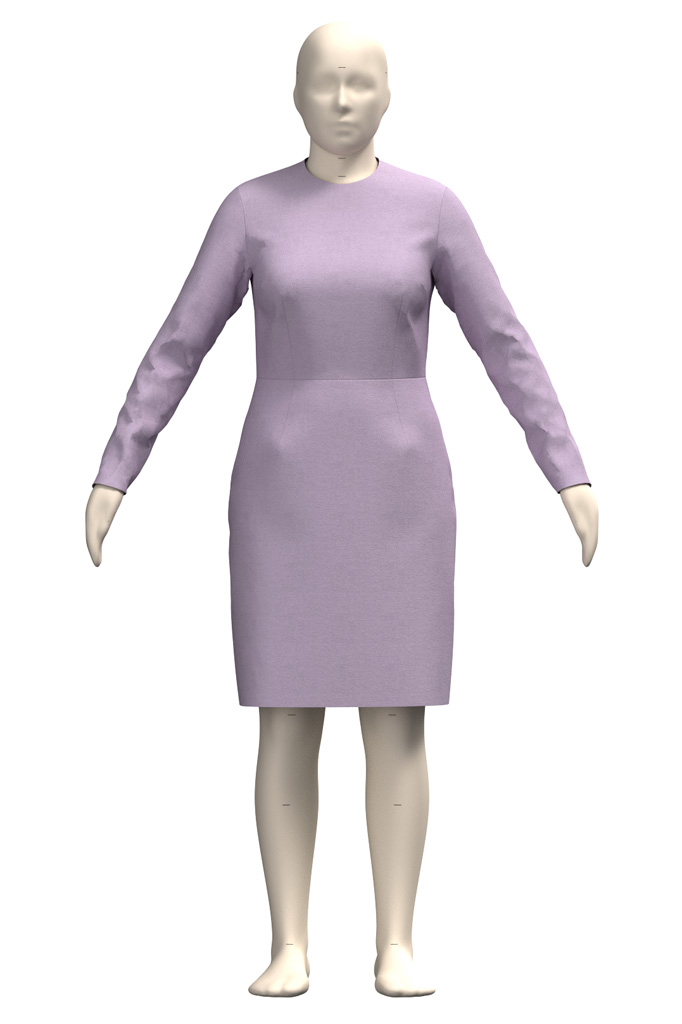
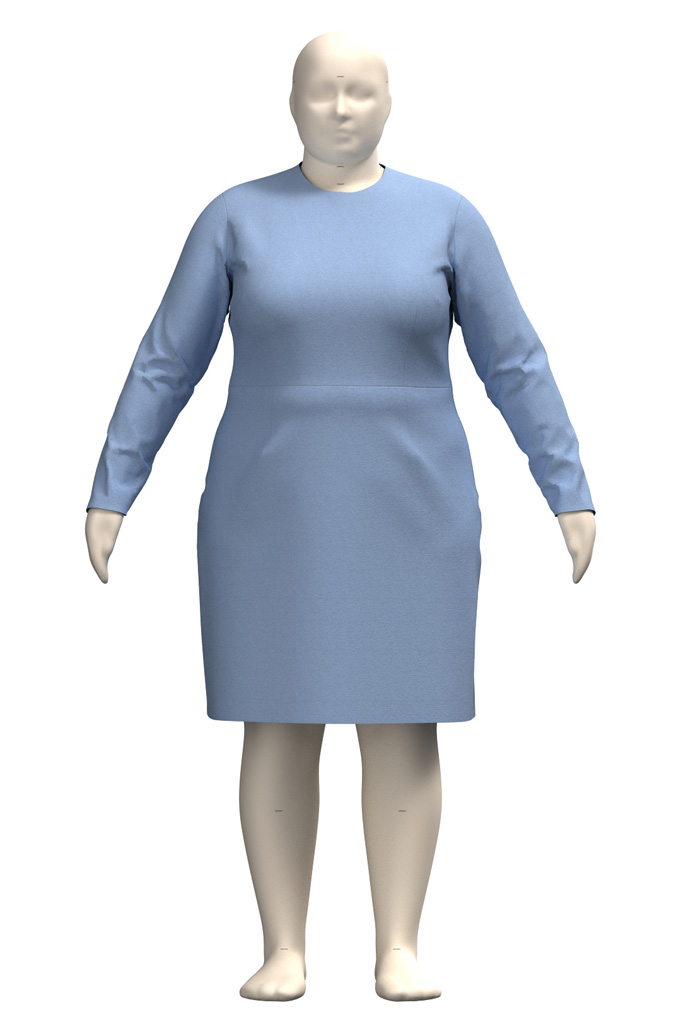
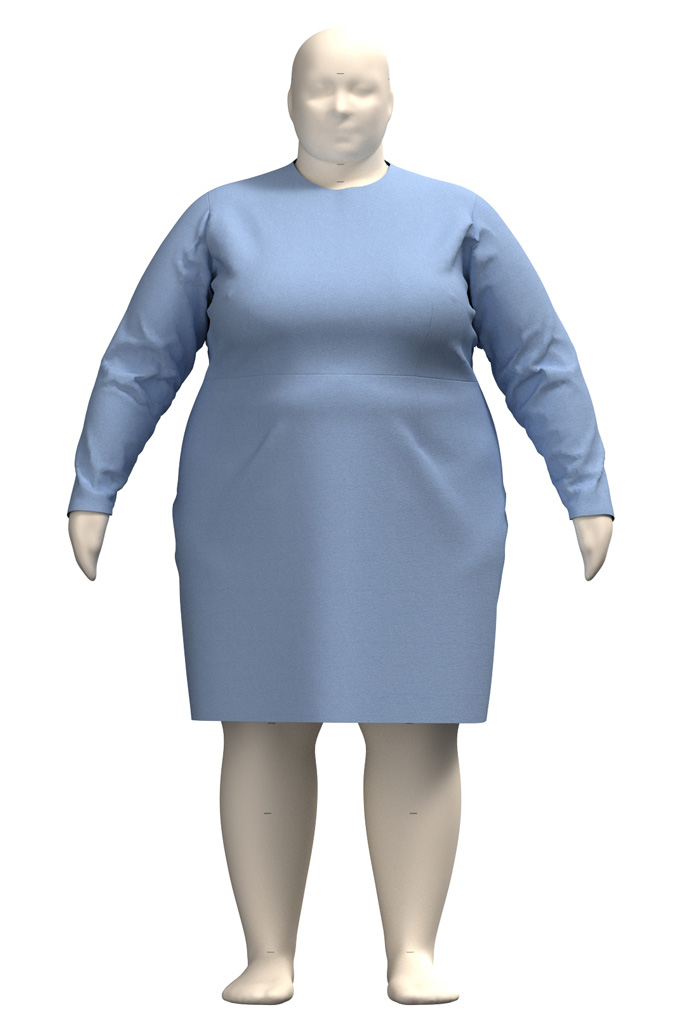
What I normally do is to split the size range into two patterns. One pattern has a M base size and is graded XXS-XXL. The other has a 2X or 3X base size and is graded 1X-6X.
Let’s compare the fit of the graded-up pattern above to the fit drafted from two different patterns below.

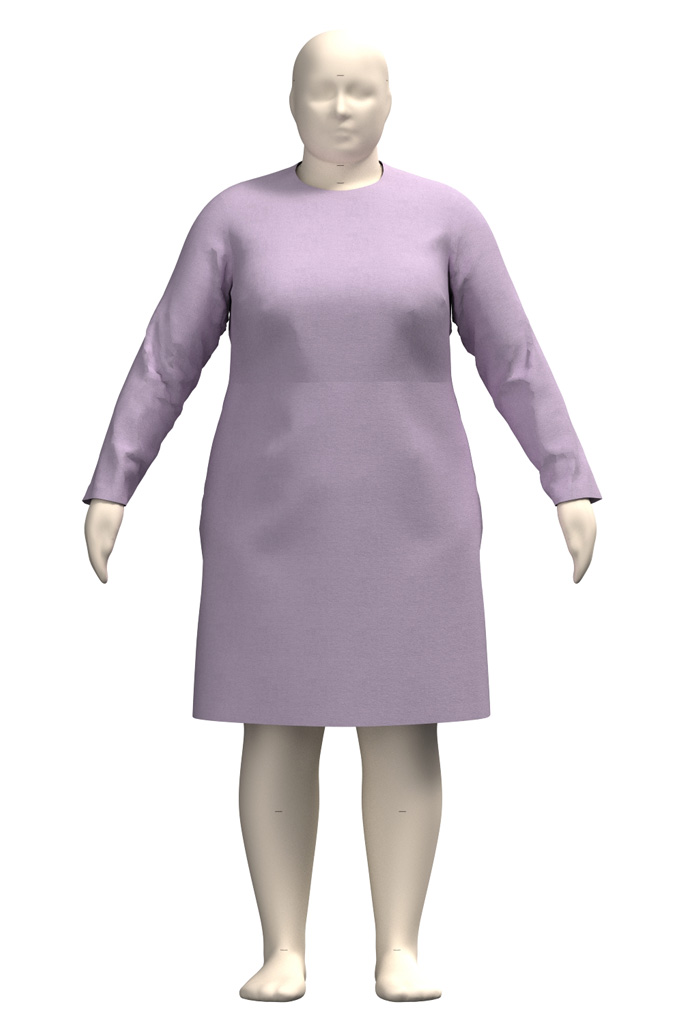
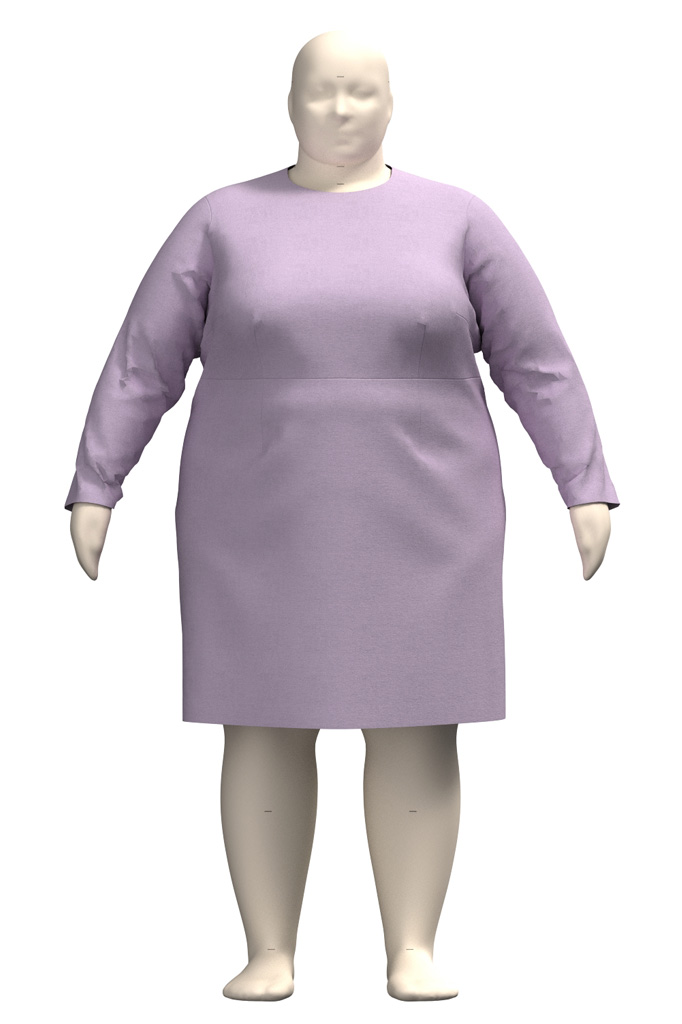
The graded-up range does “fit” – as in a person in that size could technically put it on. However, the fit is not as good as the range split into two patterns. Notice how the sizes graded up from a M (the blue ones) start to get tight in places and baggy in others as the size increases?
The waist gets snug compared to the bust and hip ease. The bicep does as well.
Then notice how the front hem is hiking up in the size 5X? This is because the bodice length is longer at the sides than the center front which curves the waist seam upward. If you zoom in, you can see that the bust darts in the graded-up pattern are too high in the blue 5X as well.
The sleeve length is okay in the graded-up range, but it is longer in the larger sizes compared to the base size M.
The biggest difference between the two fits, though, is in the armhole. Notice how the graded-up blue fit has a lot of excess fabric at the armhole above the bust? If this was a sleeveless style, there would be a major gap there.
The split range has a much more tailored fit with ease where you’d need it for movement and comfort, but no pooling fabric or gaping armholes.
Take a look at the back too.
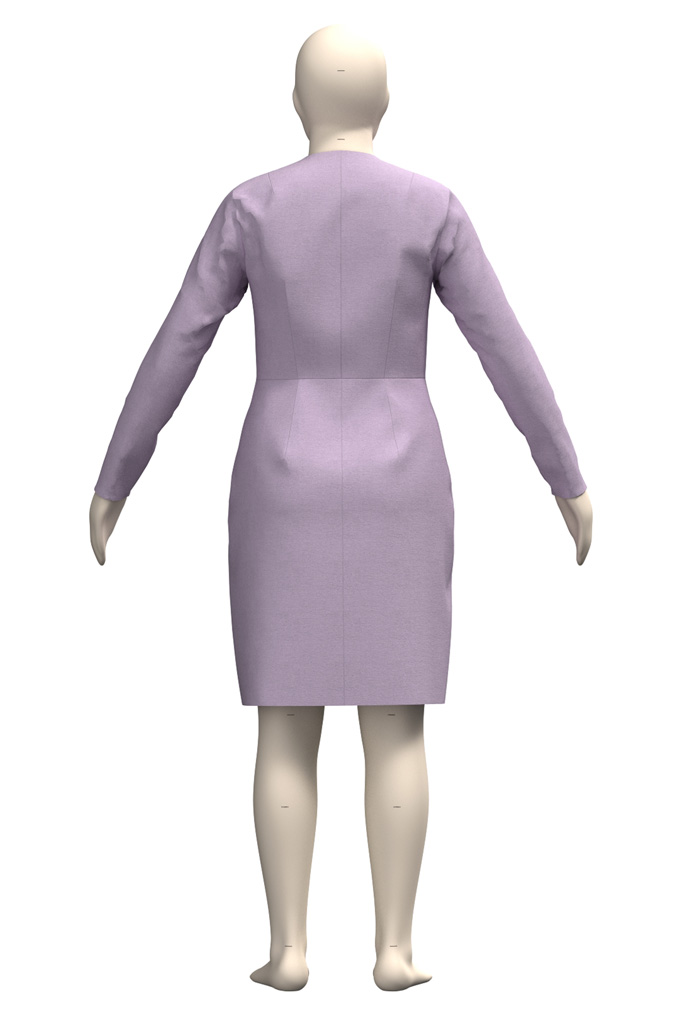
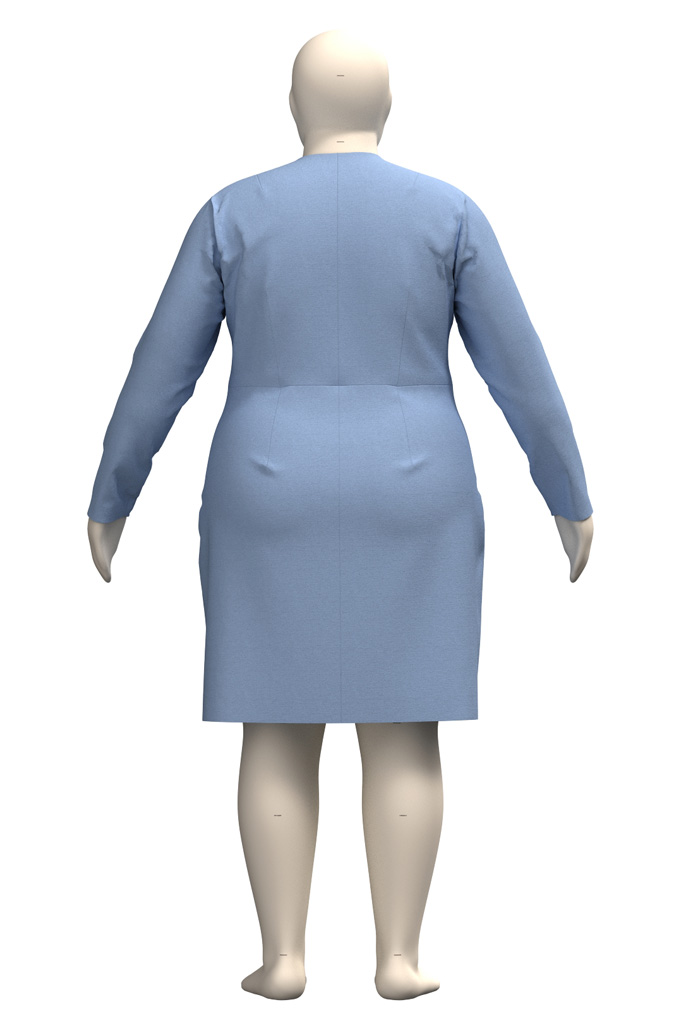
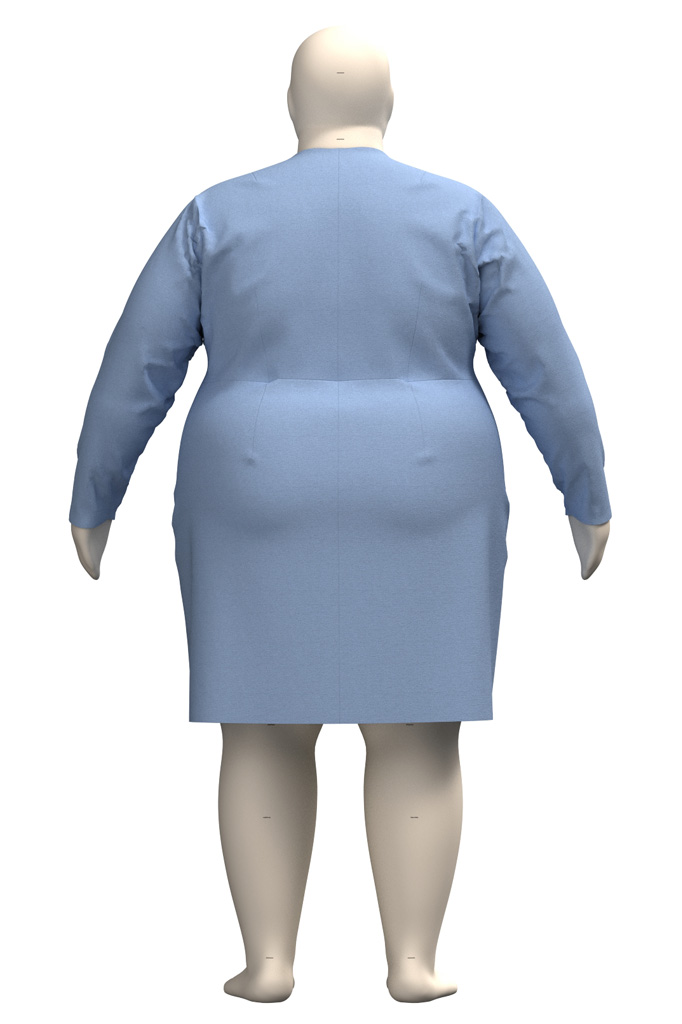

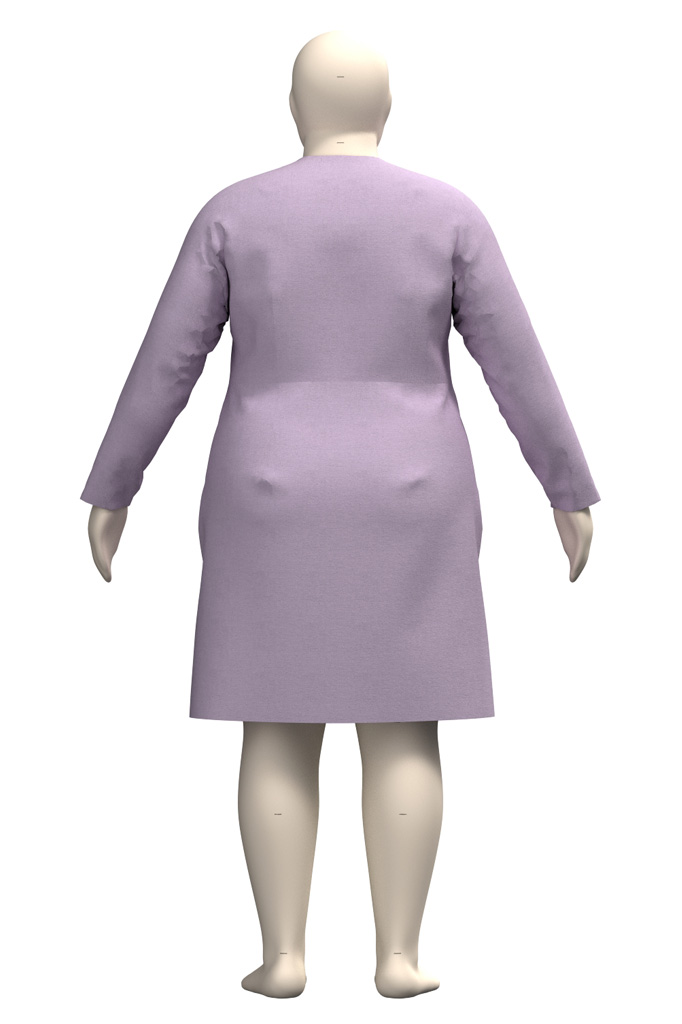
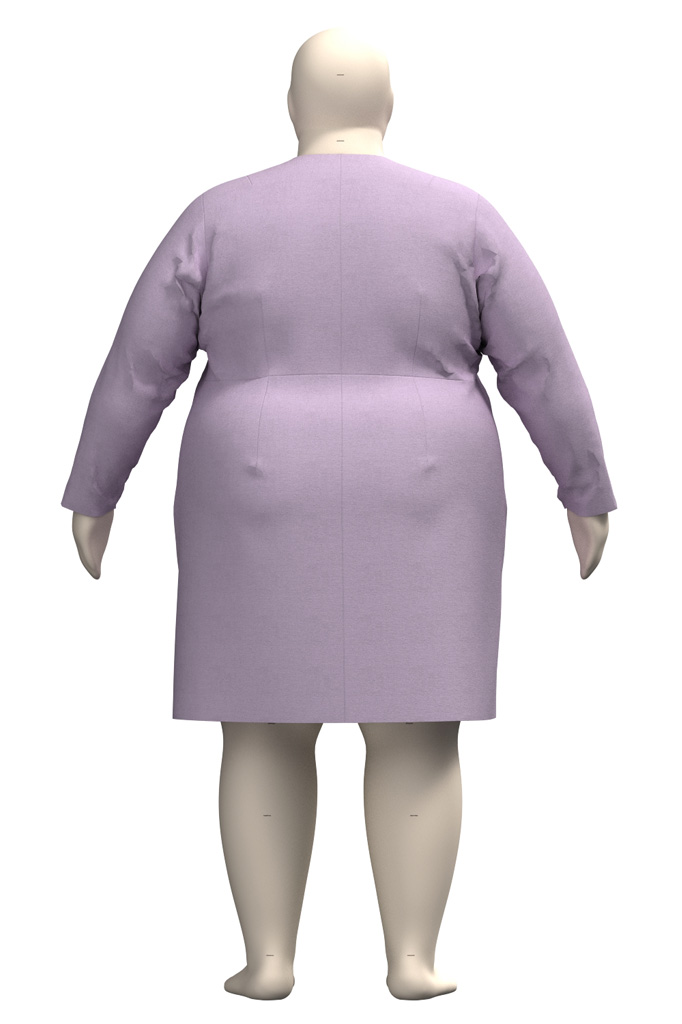
The differences in the back aren’t quite as pronounced. You can still see that the sides of the graded-up blue bodice are longer than the center and the waist is snug. You can also see that the back armhole and shoulder slope isn’t quite as good in the graded-up pattern.
Side note: in putting together this comparison, I expected the blue graded-up pattern to fit much worse than it actually does. Depending on the grade rules you use, there might be a more drastic difference. I’ve developed a unique grade rule that does account for some body proportion changes which keeps the fit from getting too distorted.
Pant block graded up
Other garment types have even worse fit when graded up from a small base size. Here is what happened to my basic pant block when I graded it from a M to a 5X. Oof.
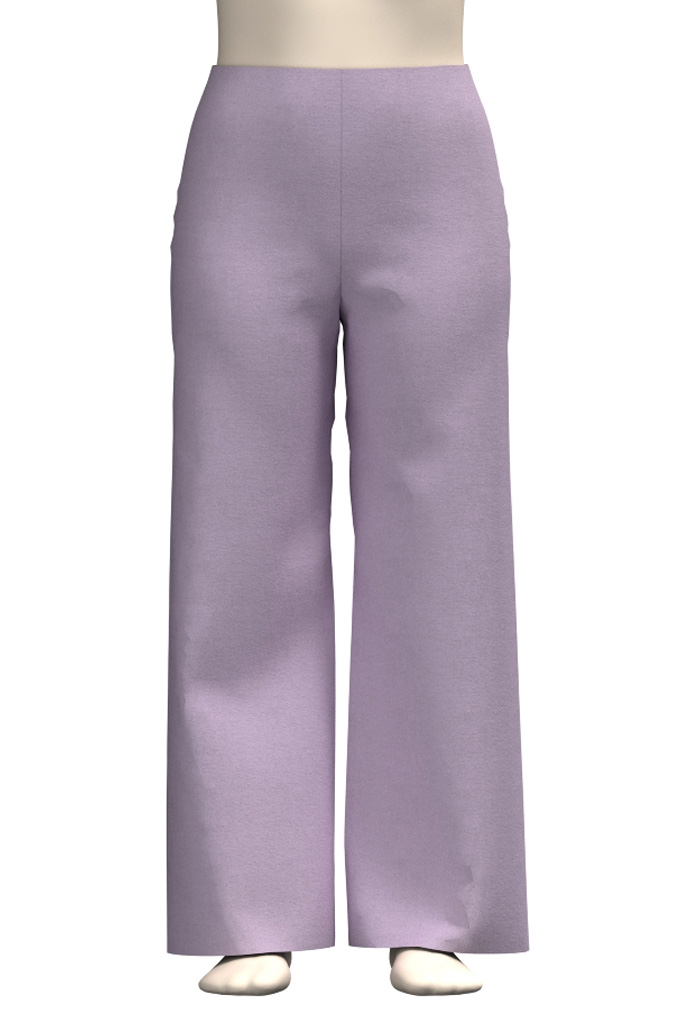
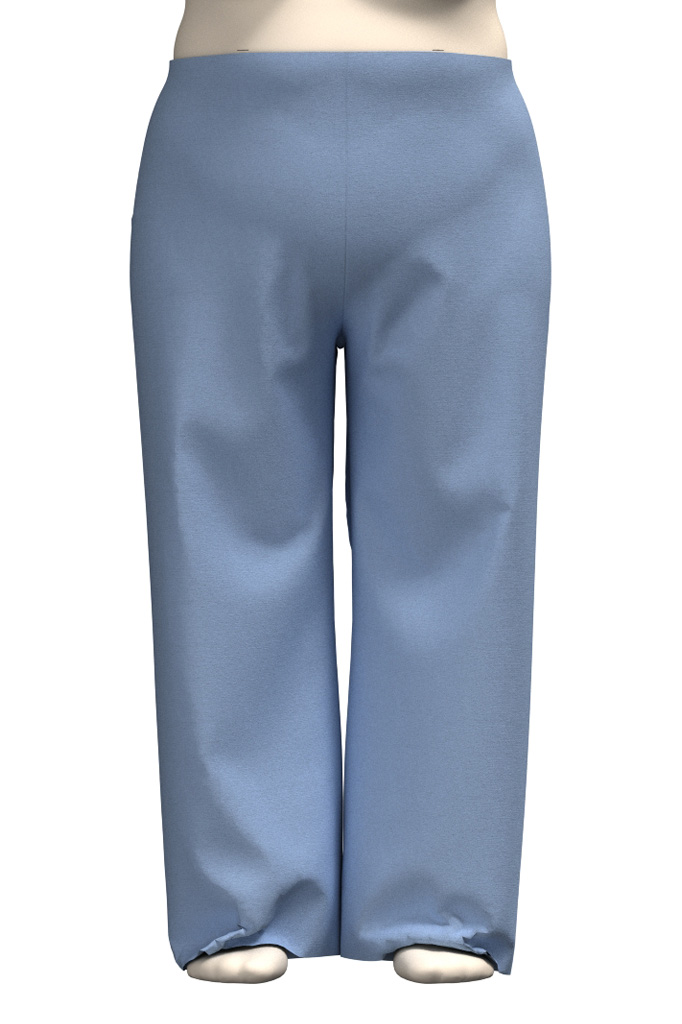
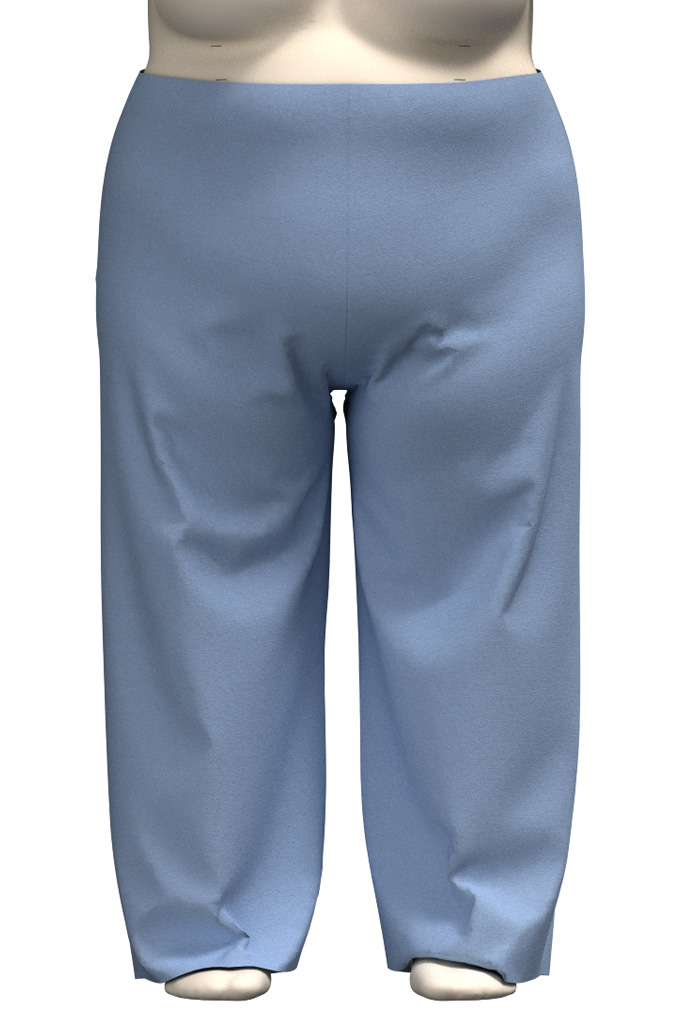
Again, compare the fit of the graded-up pant pattern above to the fit with a separate plus size pattern below.

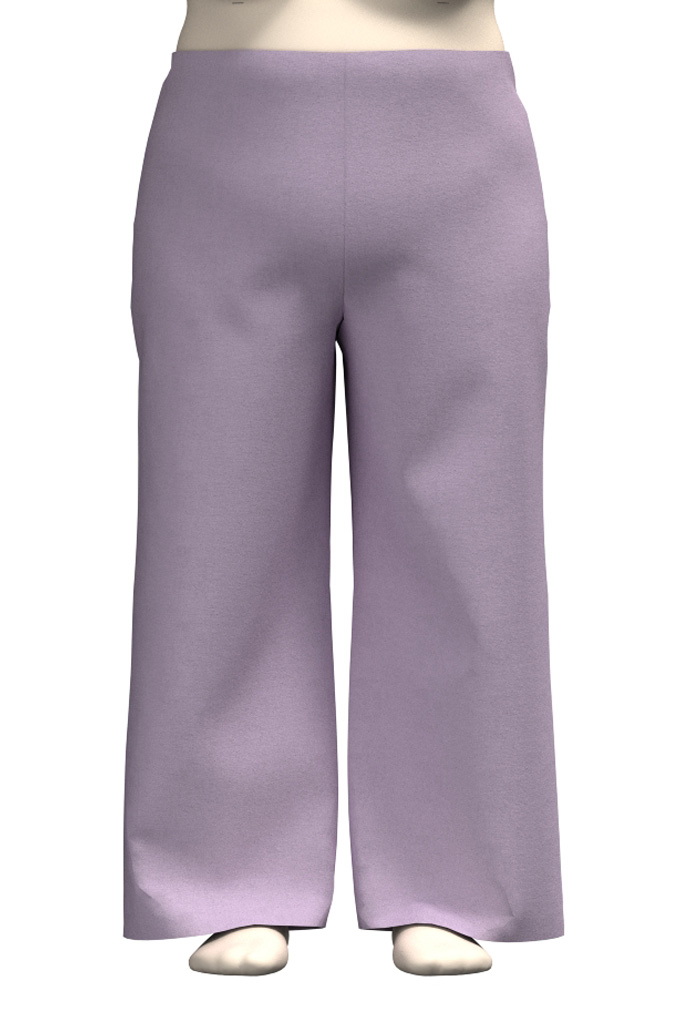

The differences in the fit are even more drastic than in the dress. First off, you’ll notice that the length of the legs is much longer in the graded-up blue pattern. Length is a pretty easy thing to adjust in the grading, but other fit issues can’t be resolved with grade rules alone.
What really bothers me about the graded-up fit is the crotch area. There is more and more camel toe as the size increases. Not cute. The angle of the legs and the ratio of the inseam to outseam length is all off, too. The fit of the separate straight size and plus size patterns is much smoother and maintains the leg angle throughout the range.
Now, let’s look at the back.
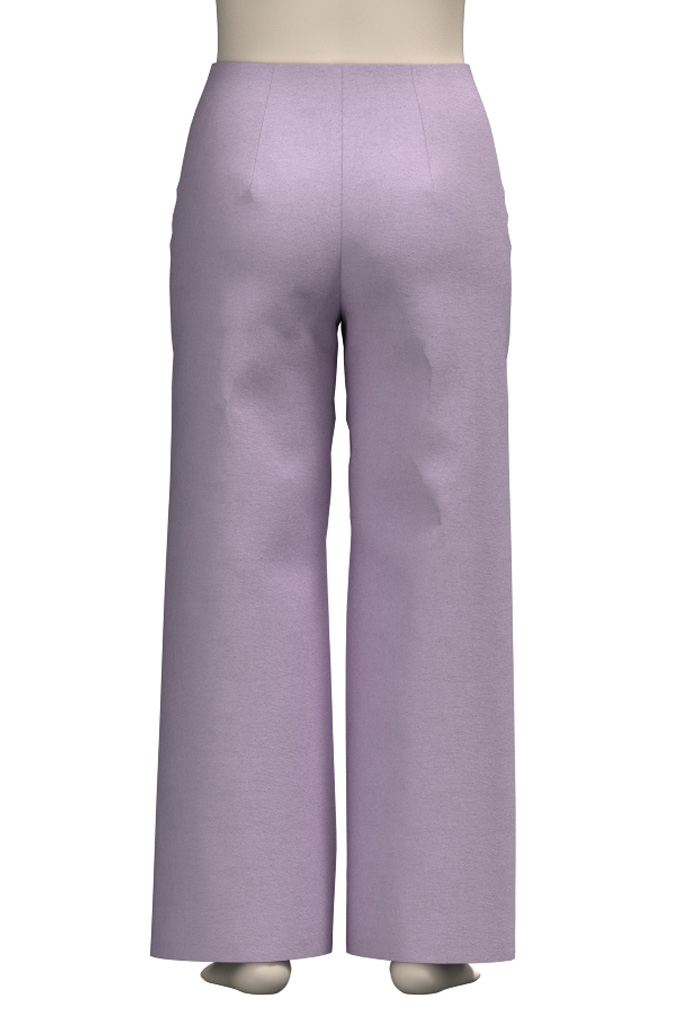
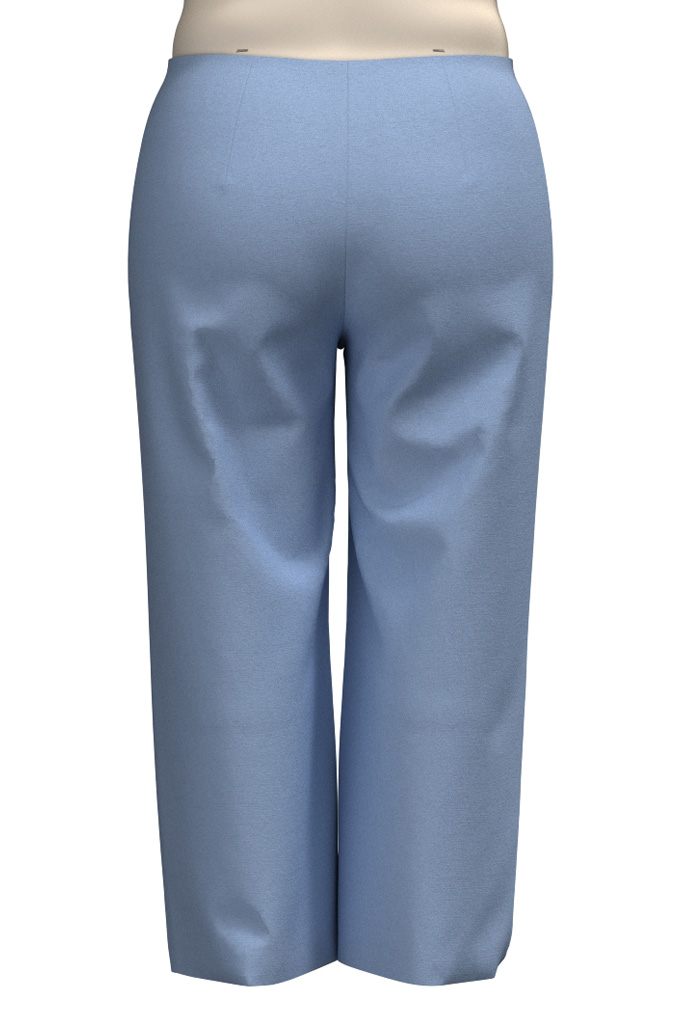
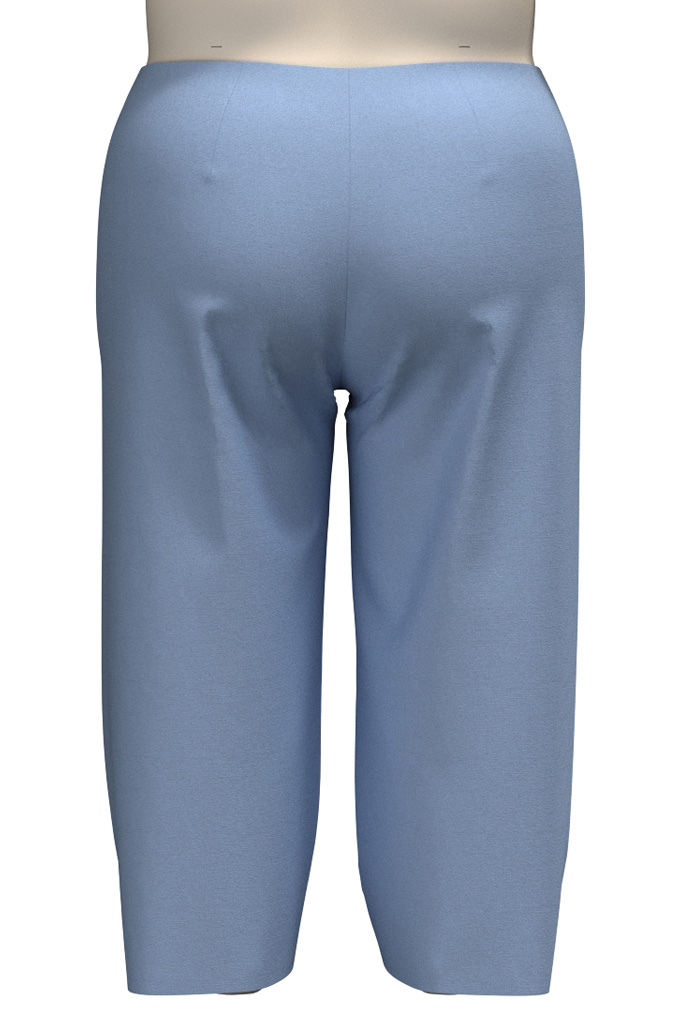


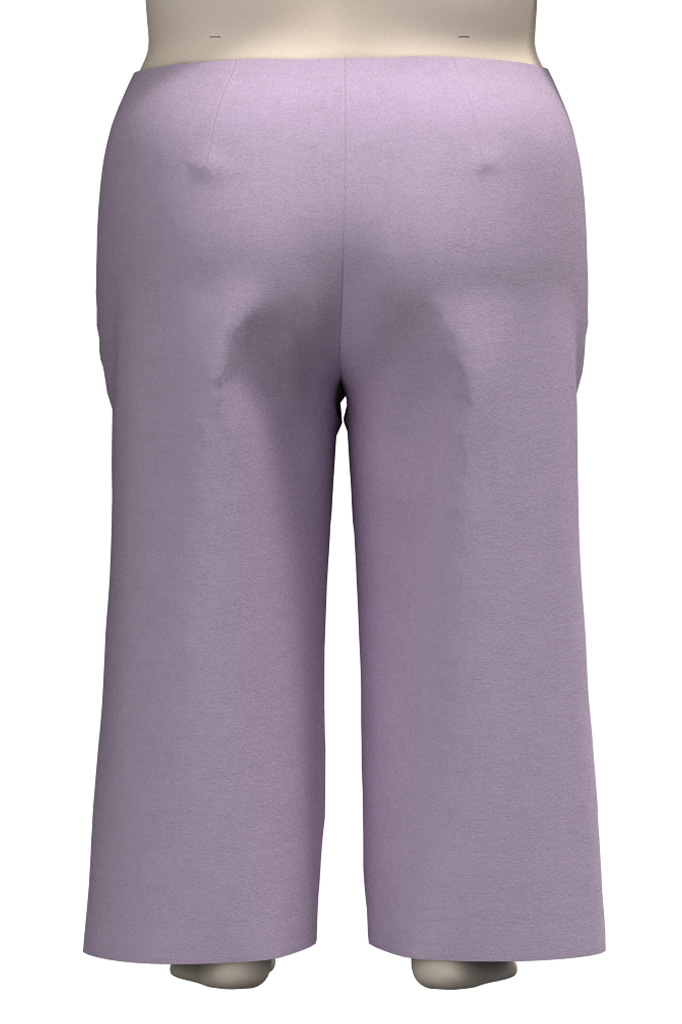
In the graded-up pattern, the rise is tight which creates a dip in the center back waist. The separate plus size pattern in purple has an even waistline.
Just like the fronts, there is too much excess fabric in the inner thigh of the graded-up pattern. The angle of the legs is off which makes the inseam too long compared to the outseam.
I don’t know about you, but to me it is 100% worth it to develop separate patterns for this size range! The graded-up fit doesn’t do the design (or the person wearing it) justice.
Comparing the patterns
So what really are the differences here? When you grade up a pattern (or grade it down) you can change the size, but your ability to adjust proportions is limited. This means that the further away from the base size you grade, the worse the fit will be.
When you split your size range into two separate patterns, you can adjust the proportions for each part of the range separately. With fewer sizes to grade within each pattern, you can achieve a more precise fit for each size.
You can see the differences in the proportions of the patterns graded up from a M and the ones drafted separately and graded from a 2X.
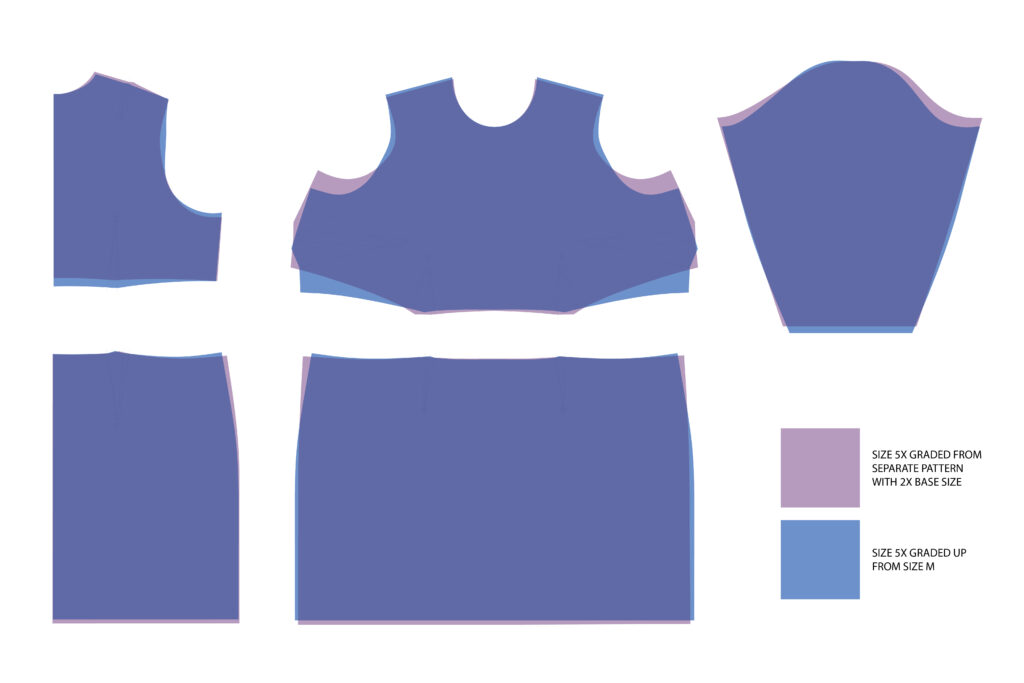
The biggest differences are indeed in the bodice lengths and the shape of the front armhole.
Comparing the pants patterns in a similar way, you can see where the shapes differ.
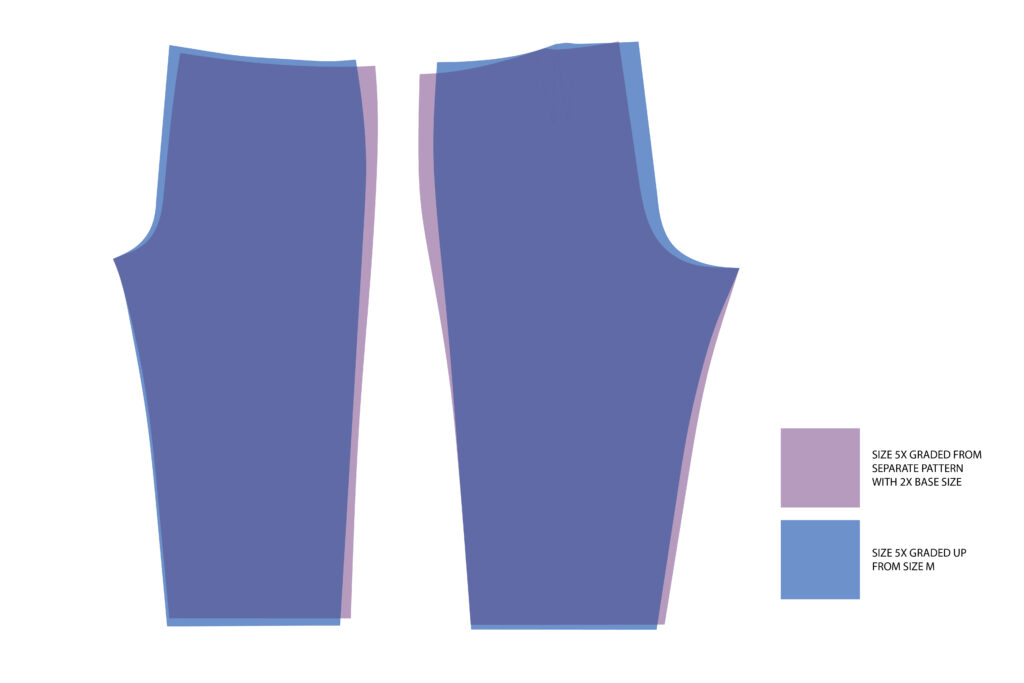
The drag lines at the crotch and tightness in the rise we saw in the 3D renders is due to insufficient body depth in the rise. The separate plus pattern allows more room for the body and thus lays smoothly on the body.
Fitting every size as well as the base size
Inclusive sizes are worth doing well. There is a big difference between clothes that someone can technically fit into and clothes that actually fit. The upper and lower ends of your size range should not be an afterthought or a marketing tactic and deserve as good of fit as your base sample size.
To get the best fit in every size of your range, don’t just grade up one pattern. Split your range into two or more patterns so you can fit the proportions of your customers more precisely.
